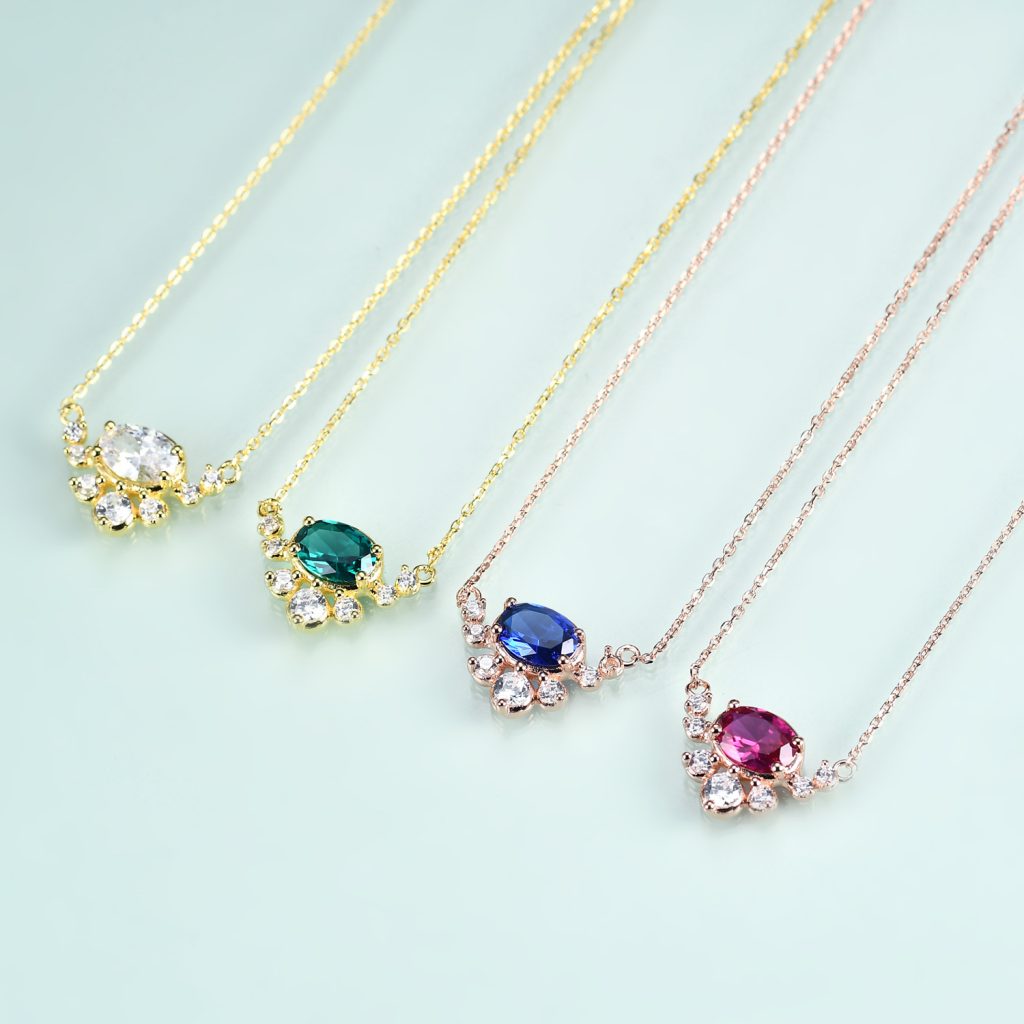Sapphire vs. Emerald: Which Colored Gemstone is Right for Your Engagement Ring?
Choosing a center stone for your engagement ring is one of the most exciting decisions you’ll make. While diamonds are a classic choice, colored gemstones like sapphire and emerald offer unparalleled personality, color, and symbolism.
But how do you decide between two of the most coveted gemstones on earth? This definitive guide breaks down the key differences between sapphires and emeralds in durability, value, color, and meaning, empowering you to choose the perfect stone for your forever ring.
At a Glance: Key Differences
| Feature | Sapphire | Emerald |
|---|---|---|
| Hardness (Mohs Scale) | 9 (Excellent for daily wear) | 7.5 – 8 (Good, but requires more care) |
| Toughness | Very Tough | Poor to Fair (Inherently included) |
| Best Known For | Royal blue hue, exceptional durability | Rich green color, classic vintage appeal |
| Symbolism | Wisdom, loyalty, nobility | Rebirth, hope, unconditional love |
| Price Range | Wide range ($$ to $$$$$) | High for top quality ($$$$ to $$$$$) |
Durability and Hardness: The Practical Choice
An engagement ring is worn every day, so durability is paramount. This is where these two gemstones differ significantly.
- Sapphire: With a rating of 9 on the Mohs scale of hardness, sapphire is the second hardest natural gemstone after diamond. This makes it exceptionally resistant to scratching and an ideal candidate for a lifetime of daily wear. Its crystal structure also gives it high toughness, meaning it’s less prone to chipping or breaking.
- Emerald: Ranking at 7.5 to 8 on the Mohs scale, emerald is certainly durable enough for jewelry. However, it is typically characterized by inherent natural inclusions (often called “jardin,” or garden, in French). These internal characteristics can make the stone more vulnerable to chipping or cracking if struck hard. A protective bezel or halo setting is often recommended for emerald engagement rings.
Winner for Durability: Sapphire. Its superior hardness and toughness make it the more worry-free option for an active lifestyle.
Color and Appearance: A Matter of Personal Taste
This is the heart of your decision—the color that speaks to you.
- Sapphire: While famous for its cornflower blue, sapphire is a gemstone of remarkable variety. It comes in every color of the rainbow except red (which is a ruby). You can find stunning pink, yellow, green, and even unique padparadscha (salmon-pink) sapphires. This versatility means you can find a sapphire that is utterly unique to your style.
- Emerald: Emerald is defined by its iconic, deep green hue. The most prized color is a bluish-green to pure green with vivid saturation and medium to dark tone. Unlike sapphire, emerald’s value is intensely focused on its signature green color. Its inclusions are often accepted as part of its character, giving each stone a unique, organic fingerprint.
Winner for Color: It’s a Tie. Choose sapphire for incredible color variety and brilliance. Choose emerald if you are captivated by a classic, deep green elegance.
Meaning and Symbolism: The Story Behind the Stone
Gemstones carry centuries of meaning, adding a deeper layer to your ring.
- Sapphire: Historically, sapphires symbolize wisdom, virtue, and good fortune. They are known as the stone of royalty and romance, famously featured on Princess Diana’s and now Kate Middleton’s engagement ring. A sapphire represents loyalty and a promise of truth.
- Emerald: For millennia, emeralds have been associated with rebirth, fertility, and unwavering love. Cleopatra was famously obsessed with them. In many cultures, emeralds are believed to promote harmony and growth within a relationship.
Winner for Symbolism: It’s a Tie. Your choice depends on which values resonate most with your love story.
Price and Value: Understanding the Investment
Both are precious gemstones, but their value drivers differ.
- Sapphire: Pricing is complex and depends heavily on color, origin, and treatment. Fine blue sapphires from Kashmir or Burma command top prices, but beautiful sapphires are available at various price points. Untreated stones are rarer and more valuable.
- Emerald: High-quality emeralds with a rich color and good clarity are exceptionally rare and can be more expensive than a diamond of comparable size. Almost all emeralds are treated with oils or resins to improve the clarity of their natural inclusions—this is a standard and accepted practice. An un-oiled, high-clarity emerald is a great rarity.
Winner for Affordability: Sapphire (generally). It offers more options across a broader budget range, though both can reach very high prices at the top end.
The Verdict: Which Gemstone is Right for You?
- Choose a Sapphire engagement ring if:
- You want a stone with supreme durability for everyday life.
- You desire a pop of color but love options beyond green (like pink or yellow).
- You value brilliance and fiery sparkle.
- The symbolism of loyalty and wisdom speaks to you.
- Choose an Emerald engagement ring if:
- You are mesmerized by a deep, luxurious green hue.
- You appreciate a vintage, romantic aesthetic and a stone with a unique “jardin.”
- You don’t mind a slightly higher level of care and maintenance.
- The symbolism of rebirth and eternal love aligns with your relationship.


